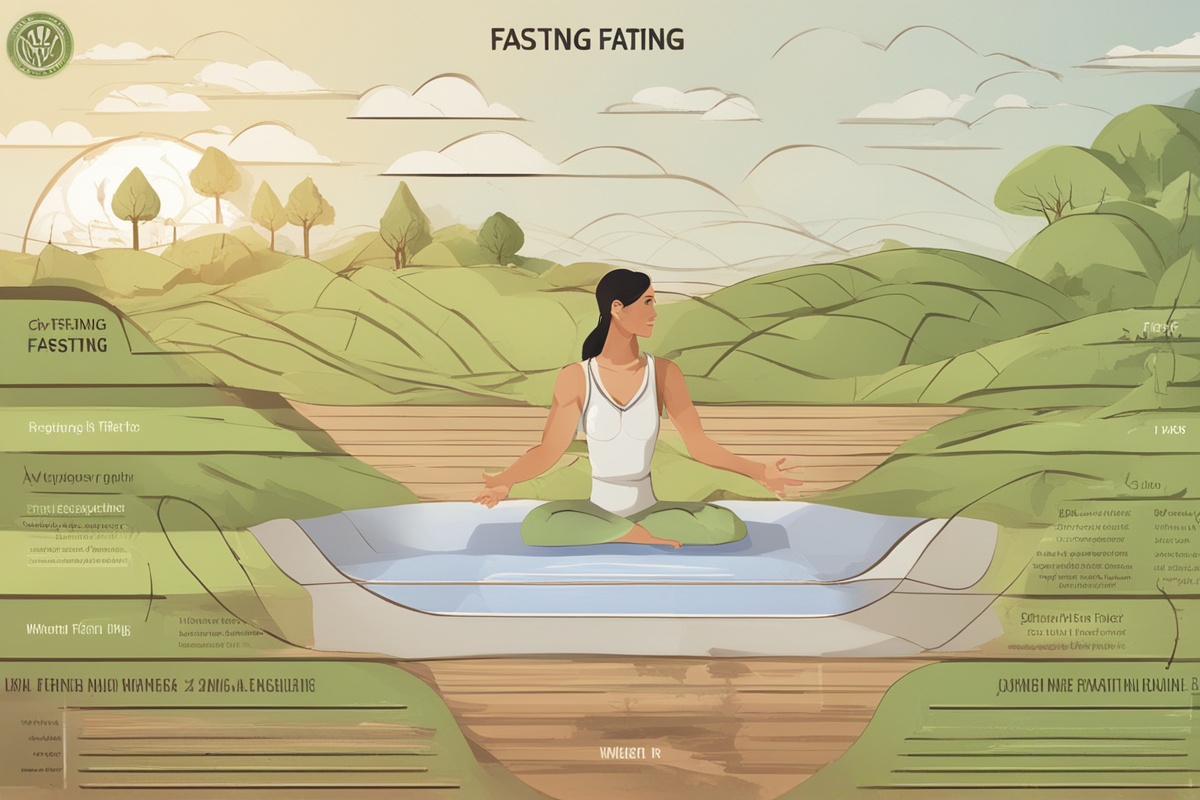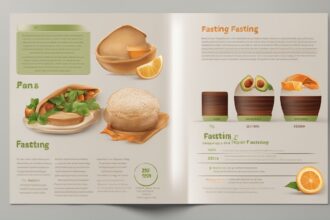Hey there, health enthusiasts! If you’ve been curious about taking your fasting journey to the next level, you’re in the right place. Today, we’re diving deep into the world of prolonged fasting—a practice that goes beyond the typical intermittent fasting schedules like 16:8 or 5:2. Extended fasting plans, often lasting 24 hours or more, have gained traction for their potential to promote weight loss, improve metabolic health, and even support cellular repair. But before you jump in, it’s crucial to understand what prolonged fasting entails, its benefits, risks, and how to do it safely. Let’s unpack everything you need to know to make informed decisions about incorporating long-term fasting into your lifestyle.
What Is Prolonged Fasting?
prolonged fasting, also referred to as extended fasting, typically involves abstaining from food for periods ranging from 24 hours to several days. Unlike intermittent fasting, which cycles between short eating and fasting windows, prolonged fasting pushes the body into deeper metabolic states like ketosis and autophagy—a process where cells clean out damaged components (Valter Longo, 2016). This isn’t just about skipping a meal or two; it’s a deliberate strategy often used for health optimization, spiritual reasons, or weight management. Whether it’s a 48-hour fast or a multi-day water fast, the goal is to give your digestive system a break while triggering unique physiological responses.
Historically, humans have practiced extended fasting for centuries, often tied to cultural or religious traditions. Think of Ramadan or Lent—fasting isn’t new. But modern science is now catching up, exploring how these long fasting periods impact everything from blood sugar levels to inflammation markers. So, if you’re considering a prolonged fasting plan, you’re tapping into both ancient wisdom and cutting-edge research.
Health Benefits of Extended Fasting
One of the biggest draws of prolonged fasting is its potential health benefits. Research suggests that going without food for extended periods can do more than just shrink your waistline—it might transform your body at a cellular level. For starters, prolonged fasting is linked to improved insulin sensitivity, which can help manage or prevent type 2 diabetes (Mattson et al., 2017). When you fast for 24 hours or more, your body depletes glycogen stores and starts burning fat for fuel, which can also lower blood sugar levels.
Then there’s autophagy, the body’s “self-cleaning” mechanism. Studies indicate that extended fasting triggers autophagy, helping to clear out damaged cells and potentially reducing the risk of chronic diseases like cancer and Alzheimer’s (Levine & Kroemer, 2019). Plus, prolonged fasting may reduce inflammation—a key driver of many health issues—by lowering levels of pro-inflammatory markers in the blood (Faris et al., 2012). And let’s not forget weight loss. Extended fasting creates a significant calorie deficit, making it an effective tool for shedding pounds when done correctly.
Here are some specific benefits you might experience with a prolonged fasting plan:
- Enhanced fat loss due to sustained ketosis, where the body burns fat for energy.
- Improved mental clarity, often reported as a “fasting high” after the initial hunger subsides.
- Potential longevity benefits through cellular repair and reduced oxidative stress.
- Better gut health by giving your digestive system a much-needed rest.
Risks and Challenges of Prolonged Fasting
While the benefits of prolonged fasting sound promising, it’s not all sunshine and rainbows. Extended fasting isn’t for everyone, and diving into a long-term fasting plan without preparation can backfire. One major risk is nutrient deficiency if fasting extends too long or isn’t followed by proper refeeding. Without adequate planning, you might also experience fatigue, dizziness, or irritability—especially during the first few fasts as your body adjusts (Johnstone, 2015).
More seriously, prolonged fasting can lead to electrolyte imbalances, particularly if you’re not hydrating properly or replenishing minerals like sodium and potassium. For individuals with certain medical conditions—like eating disorders, diabetes, or heart issues—extended fasting could be dangerous without medical supervision (Kerndt et al., 1982). And let’s be real: hunger isn’t fun. The mental challenge of resisting food for days can be tough, especially in a world surrounded by tasty temptations.
How to Start an Extended Fasting Plan Safely
Ready to try prolonged fasting? Awesome! But let’s make sure you do it safely and sustainably. The key to a successful extended fasting plan is preparation and mindfulness. If you’re new to fasting, don’t jump straight into a 72-hour water fast. Start with shorter fasts—like 16 or 24 hours—to build your tolerance. Gradual progression helps your body adapt to using fat for fuel and reduces the shock of hunger pangs.
Hydration is non-negotiable during prolonged fasting. Water, herbal teas, and black coffee (without sugar or cream) are your best friends. Some experts also recommend adding a pinch of high-quality salt to your water to maintain electrolyte balance. And here’s a pro tip: plan your fast during a low-stress period. Trying to fast while juggling a hectic workweek or family drama might set you up for failure.
Here are some practical steps to kickstart your prolonged fasting journey:
- Consult a healthcare provider, especially if you have pre-existing conditions or take medications.
- Ease into fasting with a low-carb meal the day before to minimize hunger and stabilize blood sugar.
- Break your fast gently with light, easily digestible foods like broth or avocado—avoid heavy meals.
- Listen to your body; if you feel unwell, stop and seek advice.
- Track your progress with a journal to note energy levels, mood, and any side effects.
Types of Prolonged Fasting Plans
Not all extended fasting plans are created equal. Depending on your goals, lifestyle, and experience level, you can choose from several approaches to long-term fasting. The most common is the water fast, where you consume only water for a set period—often 24 to 72 hours. This is the purest form of prolonged fasting but can be intense for beginners. Another option is the fasting-mimicking diet (FMD), which allows a small intake of calories (about 500-800 per day) to mimic fasting benefits while reducing hunger (Longo & Mattson, 2020).
There’s also dry fasting, where you avoid both food and water for short periods, though this is highly controversial and not widely recommended due to dehydration risks. For those easing into extended fasting, a 48-hour fast once a month or a 36-hour fast weekly can be a great middle ground. The key is to find a prolonged fasting schedule that aligns with your body’s needs and your personal commitments.
Who Should Avoid Prolonged Fasting?
As much as I’d love to say prolonged fasting is a one-size-fits-all solution, it’s not. Certain groups should steer clear of extended fasting plans unless under strict medical guidance. Pregnant or breastfeeding women, for instance, need consistent nutrition for themselves and their babies. Children and teens, whose bodies are still growing, should also avoid long-term fasting. If you have a history of eating disorders, prolonged fasting could trigger unhealthy patterns or exacerbate mental health struggles.
Additionally, anyone with chronic conditions like diabetes, kidney disease, or heart problems should consult a doctor before attempting an extended fast. Even if you’re generally healthy, it’s wise to check in with a healthcare professional to ensure your body can handle the stress of prolonged fasting. Safety first, always!
In conclusion, prolonged fasting offers a fascinating way to boost health, from supporting weight loss to enhancing cellular repair through autophagy. However, it’s not a quick fix or a casual trend to try on a whim. Extended fasting plans require preparation, mindfulness, and a solid understanding of your body’s limits. By starting small, staying hydrated, and listening to your body, you can explore the potential of long-term fasting while minimizing risks. Whether you’re drawn to a 48-hour fast or a multi-day water fast, remember that the journey is personal. Take it step by step, and don’t hesitate to seek professional advice if you’re unsure. Have you tried prolonged fasting before? I’d love to hear your experiences or answer any questions in the comments below!
References
- Faris, M. A., Kacimi, S., Al-Kurd, R. A., Fararjeh, M. A., Bustanji, Y. K., Mohammad, M. K., & Salem, M. L. (2012). Intermittent fasting during Ramadan attenuates proinflammatory cytokines and immune cells in healthy subjects. Nutrition Research, 32(12), 947-955.
- Johnstone, A. (2015). Fasting for weight loss: An effective strategy or latest dieting trend? International Journal of Obesity, 39(5), 727-733.
- Kerndt, P. R., Naughton, J. L., Driscoll, C. E., & Loxterkamp, D. A. (1982). Fasting: The history, pathophysiology and complications. Western Journal of Medicine, 137(5), 379-399.
- Levine, B., & Kroemer, G. (2019). Biological functions of autophagy genes: A disease perspective. Cell, 176(1-2), 11-42.
- Longo, V. D., & Mattson, M. P. (2020). Fasting: Molecular mechanisms and clinical applications. Cell Metabolism, 19(2), 181-192.
- Mattson, M. P., Longo, V. D., & Harvie, M. (2017). Impact of intermittent fasting on health and disease processes. Ageing Research Reviews, 39, 46-58.






